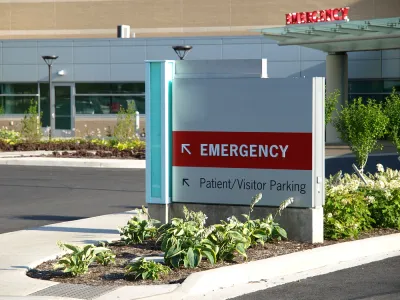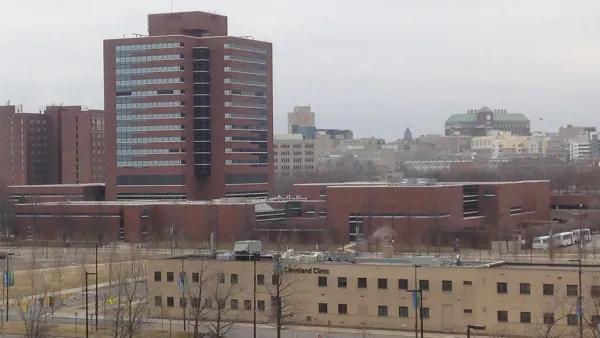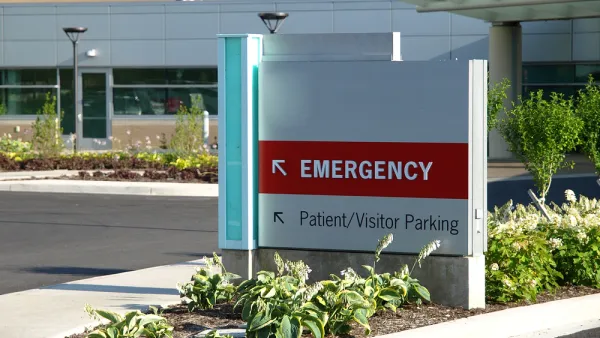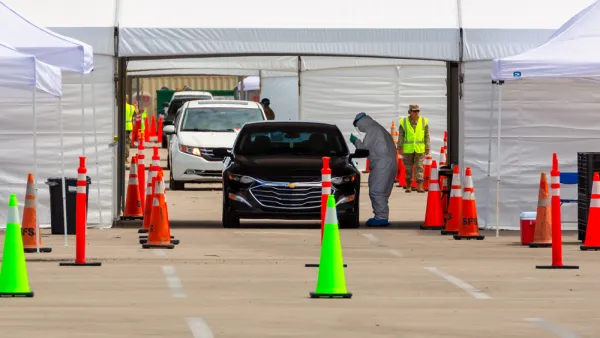Hospitals, medical research centers, and the like are supposed to represent health, but are often an unappealing and monolithic presence in the urban landscape. How can the form of health centers fall in line with their function?

There's been controversy about the responsibilities of hospitals and medical centers to their communities. But what about their physical form and how it impacts neighbors and patients alike?
Jennifer S. Vey says we need more discussion about "how the physical character of urban health centers, and the relationship they in turn have with their surrounding neighborhoods, could be more supportive of expanded and evolving ideas for what it takes to build a healthier society."
As things stand, most medical buildings aren't models of urban connectivity. Instead they embody a "starkly similar, and fairly depressing, spatial form: large-scale, inwardly focused buildings, ample parking, and scarcely any people in site."
Vey writes that hospital and research campuses are usually self-contained, blocking out community interaction, isolating patients and staff, even preventing medical progress by segregating doctors according to specialty and role.
A greener (as in literal plants) and more connected medical campus could address these failings by building on the study of healthy cities. Vey gives some promising examples of such medical "innovation hubs" and ends with a figure: $97.1 billion. That's the value of all large healthcare buildings planned or under construction in the United States at the end of 2015.
FULL STORY: Urban health centers: tear down this wall

Analysis: Cybertruck Fatality Rate Far Exceeds That of Ford Pinto
The Tesla Cybertruck was recalled seven times last year.

National Parks Layoffs Will Cause Communities to Lose Billions
Thousands of essential park workers were laid off this week, just before the busy spring break season.

Retro-silient?: America’s First “Eco-burb,” The Woodlands Turns 50
A master-planned community north of Houston offers lessons on green infrastructure and resilient design, but falls short of its founder’s lofty affordability and walkability goals.

Test News Post 1
This is a summary

Analysis: Cybertruck Fatality Rate Far Exceeds That of Ford Pinto
The Tesla Cybertruck was recalled seven times last year.

Test News Headline 46
Test for the image on the front page.
Urban Design for Planners 1: Software Tools
This six-course series explores essential urban design concepts using open source software and equips planners with the tools they need to participate fully in the urban design process.
Planning for Universal Design
Learn the tools for implementing Universal Design in planning regulations.
EMC Planning Group, Inc.
Planetizen
Planetizen
Mpact (formerly Rail~Volution)
Great Falls Development Authority, Inc.
HUDs Office of Policy Development and Research
NYU Wagner Graduate School of Public Service




























